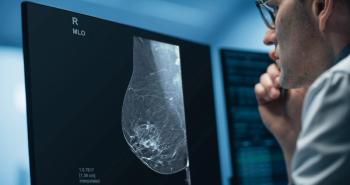
Google-like system speeds mammography interpretations
Medical physicists at Duke University are employing an approach similar to the one used by millions of Internet users daily to obtain computer-driven second opinions on mammograms demonstrating suspicious breast masses. The Google-like approach compares questionable mammograms with selected images ranked to reflect the likely value of their information content.
Medical physicists at Duke University are employing an approach similar to the one used by millions of Internet users daily to obtain computer-driven second opinions on mammograms demonstrating suspicious breast masses. The Google-like approach compares questionable mammograms with selected images ranked to reflect the likely value of their information content.
This process is analogous to how a Google search first returns a list of only those Web sites that it determines have the most important and useful information on the words entered in the search.
The system, presented at the American Association of Physicists in Medicine meeting in Orlando, enables computers to maintain a high level of accuracy while performing an extremely fast analysis. Results can be obtained within three seconds, according to the researchers.
The key to the success of this knowledge-based computer-assisted detection (KB-CAD) system is the use of principles of information theory, said Georgia D. Tourassi, Ph.D., an associate research professor in radiology at Duke Advanced Imaging Laboratories.
When a new, unknown case is presented for analysis, the KB-CAD system compares the case with mammography images in the database. It retrieves cases that are similar, specifically those that share certain visual features and properties. Enough similarity to a known case of breast cancer suggests the presence of cancer.
Although diagnostically accurate, this practice becomes inefficient as the image database increases in size. Therefore, the researchers incorporate an additional tactic.
Instead of comparing the new unknown case with all mammography images stored in the knowledge database, the researchers restrict the analysis to the stored cases that are most informative. Selection of the most informative cases is achieved using an image indexing strategy based on the concept of image entropy. This represents a measure of the disorder or complexity in the image.
An image that is all black or white has zero entropy. An image of a checkerboard has low entropy - it consists of an equal number of light and dark pixels. Complex images with more uniform distribution of many pixel intensity levels have higher entropy and are considered more informative in the context of the Duke system.
Normal breast tissue can be as complex as a tumor, Tourassi says.
"This is precisely the reason why mammographic diagnosis is such a challenging task. Our database includes normal cases as well in the decision-making process," she said.
In a pilot study, the Duke researchers applied their technique to a database of 2300 mammography images. They compared a sample with the 600 most informative images, reducing their CAD system's processing time to less than three seconds per query. They expect to launch a larger study in a year to evaluate the clinical impact of this new approach.
Newsletter
Stay at the forefront of radiology with the Diagnostic Imaging newsletter, delivering the latest news, clinical insights, and imaging advancements for today’s radiologists.




























